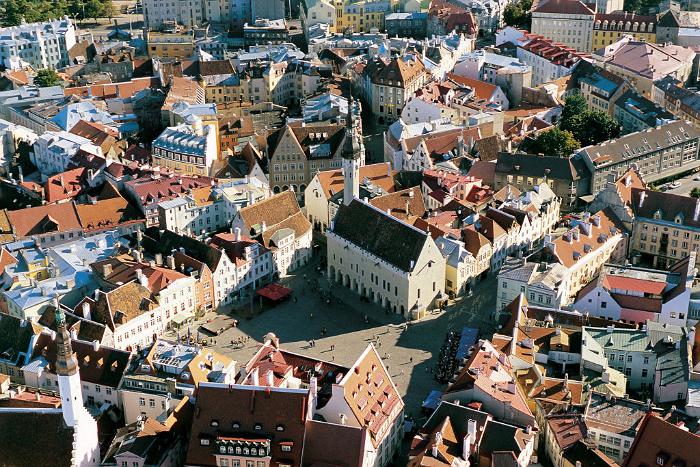https://dmnes.wordpress.com/2015/12/18/nicknames-in-medieval-estonia/


In their previous post, the DMNES researches surveyed the percentage of diminutive and hypocoristic forms in the Dictionary’s dataset sorted according to modern countries, and one stand-out surprise was Estonia: Over 40% of their citations are nicknames of some form! Why is it that diminutives and hypocoristics were so popular in medieval Estonia?

Old Town in Tallin
Well, the onomasts aren’t exactly in a position to answer the why, but they can look at the what — what are the types of nickname patterns that they see, do they differ between men and women, can they say anything interesting about these patterns vs. those in nearby countries? That’s what they will explore in this post.
First, the feminine names: Only two of the nicknames belong to women, and both come from a Middle Low German contexts. The first is, in the vocabulary they introduced, a hypocoristic, formed by taking a name and truncating it to make a pet form. The example is Barbar, from Barbara. This same diminutive also shows up in Latvia, again in MLG contexts. The second is a diminutive, formed by adding the Low German diminutive suffix -ke, to the root name Anne, to result in the form Anneke. As with Barbar, Anneke also shows up in Latvia at roughly the same time.
This leaves over 600 diminutive forms left, of which nearly 10% — 53 — are Hans, a German hypocoristic of Johannes, one of the standard Latin forms of John, and if they add variants such as Hannes, Han, Hanß, etc., the number rises significantly. From about the middle of the 12th C on, John quickly became far and away the most popular man’s name throughout Europe. In German dialects, Hans, Hanns, Hannes, etc., were often as much more popular than Johannes or Johan than these names were than the next most popular.
So, one answer to the ‘why’ is: Because Low German was a standard documentary language in late medieval Estonia, and the most popular masculine name in late medieval Low German contexts was a diminutive, so that is why there are so many diminutives in medieval Estonia. (This, however, doesn’t address the other why question, which is why the nickname forms were more common than full forms!)

Medieval Days festival in Tallin
Hans makes up just under 10% of the masculine nicknames; a large percentage of the remainder are covered by just a handful of other names: Cord, Kord, Kort, a Low German hypocoristic of Conrad; Hintze, Hennyng, Hennynck, Heine, fromHenry; Cleys, Clauwes, Claues, Claes, Cleys, Clawes, and numerous other hypocoristics of Nicholas; Ludike and Ludeke, from Louis; and Wynyke, a diminutive of any of various names beginning with wini ‘friend’. Other less common names also give rise to hypocoristics, such as Bastian, from Sebastian;Brosius, from Ambrose; and Aßmuß from Erasmus.
So much for the ordinary, every day nicknames, your Estonian Tom, Dick, and Harry, if you will. Let’s explore some of the unusual ones!
- Nicknames of Constantine: Coest, Kosst.
- Nicknames of Habakukk: Habbo, Köke, Kock.
- Nickname of Hubert: Hoppe.
- Nicknames of Jacob: Jaeck, Jack, Jacho, Kowpy, koup.
- Nickname of Joachim: Jachi.
- Nicknames of Joseph: Jessa, Seppo.
One thing of note is that many of these unusual hypocoristics derive from Biblical names.
The DMNES researchers will close by looking at one name which, across Europe, is one of the most prolific spawner of nicknames: Theodoric. In Estonia alone, the name rivals John in popularity, and they have seventeen different nickname forms — most of which are diminutives of hypocoristics: Tideke, Tideken, Tideman, Tidike, Tijdeke,Tijdeman, Tijdike, Tile, Tous, Tydedeynk, Tydek, Tydeke, Tydeken, Tydeman,Tydike, Tydiken, Tyman.
This will not be the last time they see Theodoric when exploring this month’s topic!
No comments:
Post a Comment